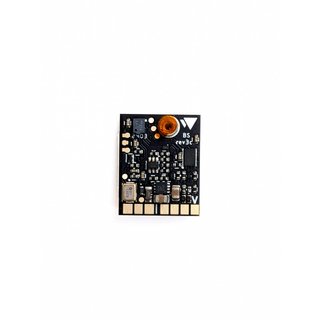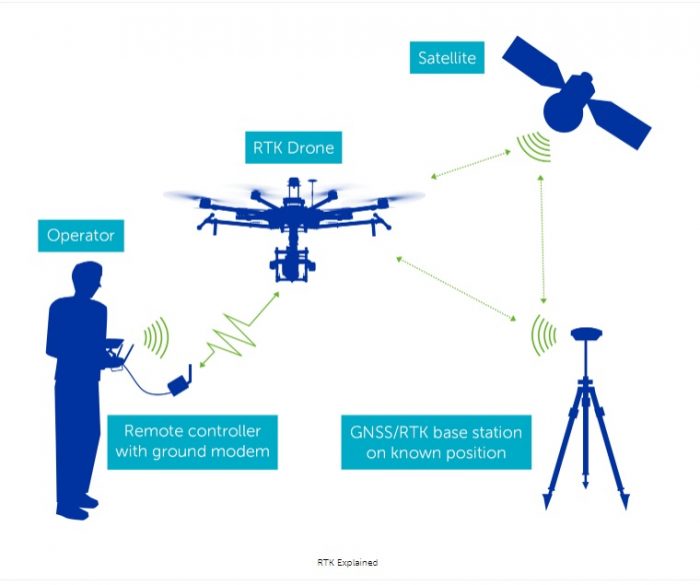Unequaled Precision: SparkNavi Drone Flight Controller and GNSS/INS Made in Taiwan
Unequaled Precision: SparkNavi Drone Flight Controller and GNSS/INS Made in Taiwan
Blog Article
Checking Out the Function of Drone Flight Controllers in Enhancing Flight Stability and Navigation Efficiency
The innovation of drone technology has significantly enhanced the significance of trip controllers, which serve as the mind of these aerial lorries. By integrating real-time data from a range of sensors, flight controllers improve flight stability and navigation efficiency, ensuring that drones can operate smoothly also in complicated settings.

Comprehending Flight Controllers
Trip controllers are indispensable elements in the performance of drones, offering as the brains that manage and support flight procedures. These sophisticated tools procedure data from numerous sensing units, including accelerometers, gyroscopes, and GPS, to make sure that the drone keeps its desired flight course. The trip controller interprets this data and carries out commands based on pre-defined algorithms, allowing the drone to react to environmental changes, such as wind or obstacles.
The main function of a trip controller is to maintain security during flight. It accomplishes this by making real-time adjustments to the drone's motors and control surfaces, making certain balance and control. In addition, contemporary flight controllers include advanced functions such as waypoint navigating, enabling automated flight paths and improved functional performance.
Understanding the architecture of flight controllers is vital for both specialists and enthusiasts. They typically contain a microcontroller, firmware, and different interfaces for sensing unit input and communication. As technology advancements, flight controllers have come to be a lot more small and qualified, integrating man-made intelligence to enhance decision-making procedures and adjust to complex flight scenarios. This evolution indicates an essential growth in the drone sector, paving the method for a lot more innovative applications and more secure procedures.
Trick Parts of Trip Security
Achieving optimal flight security in drones counts on numerous key parts that operate in concert to make certain smooth and regulated operations. Central to this stability is the trip controller itself, which refines data from different sensing units to keep the wanted flight perspective. This includes accelerometers and gyroscopes that determine motion and orientation, permitting real-time changes to the drone's setting.
One more vital component is the digital speed controllers (ESCs), which regulate the power delivered to the electric motors. By finely adjusting electric motor speeds in action to flight controller commands, ESCs assist keep balance and neutralize disturbances brought on by wind or abrupt movements.
In addition, the layout of the drone's framework plays a pivotal function in flight stability. A well-structured structure reduces vibrations and enhances the general wind resistant account, adding to smoother trip attributes. Finally, the assimilation of advanced algorithms within the trip controller aids in anticipating changes, ensuring a responsive and versatile trip experience.
With each other, these parts create a cohesive system that boosts a drone's stability, permitting accurate maneuvering and enhanced efficiency in different trip problems.
Navigation Effectiveness Strategies
Efficiency in navigating is essential for enhancing drone operations, especially in complicated settings. Reliable navigation techniques improve the capability of drones to go across tough surfaces and stay clear of barriers, consequently boosting operational effectiveness and security.
One noticeable strategy is the execution of advanced GPS and inertial dimension systems (IMUs) that supply exact place monitoring and positioning data. These innovations enable drones to calculate ideal flight courses in real-time, thinking about various elements such as wind conditions and potential challenges.
Another strategy entails making use of formulas for course preparation and optimization. Algorithms such as A * and Dijkstra's algorithm can be deployed to determine the most reliable course while minimizing energy intake and trip time. Moreover, incorporating artificial intelligence models can enable drones to adaptively gain from their atmospheres, enhancing navigating abilities through experience.

Effect On Autonomous Drones
The integration of innovative navigating methods has profoundly changed the capacities of autonomous drones, enabling them to operate with greater freedom and precision. SparkNavi drone flight controller and GNSS/INS made in taiwan. These improvements are largely attributed to sophisticated trip controllers that use real-time data handling and sensor fusion, permitting drones to browse complicated environments flawlessly
The influence on autonomous drones expands past mere navigating; it includes improved obstacle evasion, enhanced security during vibrant conditions, and raised objective reliability. By leveraging algorithms that include device understanding and expert system, drones can adapt to altering situations, making educated decisions that enhance their flight courses while minimizing threats.
Additionally, the application of robust flight controllers has facilitated the implementation of intricate tasks, such as aerial assessments, shipment solutions, and agricultural surveillance, with minimal human treatment. This capability not just streamlines operations yet also reduces human error, therefore boosting overall safety.
Therefore, the operational range of informative post independent drones has increased considerably, making them crucial tools in different sectors. Their ability to carry out efficiently in varied scenarios highlights the crucial function that progressed trip controllers play in forming the future of unmanned airborne systems.
Future Trends in Flight Control
Frequently, improvements in trip control innovation are poised to redefine the landscape of drone operations in the coming years. Arising patterns suggest a substantial change towards improved expert system (AI) assimilation, making it possible for trip controllers to refine real-time data more effectively. This evolution will certainly facilitate improved decision-making capabilities, allowing drones to adapt to vibrant ecological problems autonomously.
In addition, the implementation of artificial intelligence algorithms is expected to enhance predictive maintenance, thereby minimizing downtime and Click This Link extending the lifecycle of drone components. This proactive approach to upkeep will certainly be essential as drone applications increase throughout different markets, from agriculture to logistics.

.png)
Finally, improvements in safe and secure interaction methods will certainly resolve safety and security and regulative worries, making certain that drones can operate seamlessly in congested airspaces (SparkNavi drone flight controller and GNSS/INS made in taiwan). Collectively, these patterns point in the direction of a future where flight control systems are not only smarter and more efficient yet also qualified of running safely in an increasingly incorporated airspace
Final Thought
Finally, drone flight controllers are integral to improving trip stability and navigation effectiveness via the sophisticated handling of sensing unit information. By keeping optimal flight perspectives and using innovative formulas for course optimization and barrier evasion, these controllers dramatically contribute to the freedom and functional safety and security of drones. As technology remains to progress, better improvements in trip control systems are prepared for, promising improved performance and expanded abilities in the world of unmanned aerial automobiles.
By incorporating real-time information from a variety of sensing units, discover this flight controllers enhance trip security and navigation effectiveness, ensuring that drones can run efficiently also in intricate environments.Flight controllers are essential elements in the performance of drones, offering as the minds that stabilize and manage flight procedures. Furthermore, modern flight controllers incorporate innovative features such as waypoint navigating, allowing for automated flight courses and improved operational performance.
Central to this security is the trip controller itself, which processes data from numerous sensors to maintain the preferred trip mindset.In conclusion, drone trip controllers are integral to boosting flight stability and navigating efficiency with the advanced handling of sensor data.
Report this page